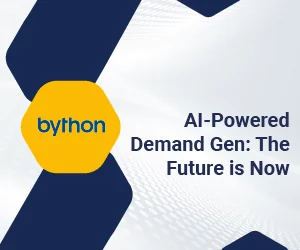No matter the nature of the business, HR departments often consume a substantial portion of the operating budget – without having an overtly evident role in profitability. As a result, in contrast to divisions like sales and marketing, where output can be easily quantified, human resources is frequently referred to as a “cost center.”
Investing in a workforce management platform turns this model on its head. Through its features and functionalities, the system lets HR teams optimize expenses and potentially increase revenues. The right workforce management platform will facilitate accurate labor cost forecasting, employee management, shift planning, and time and attendance tracking.
That is why selecting the right platform is essential for any organization.
Understanding Modern Workforce Management Needs
When you think about the paradigmatic shift happening across workplaces globally –. in a post-pandemic world – several key trends immediately come to light. Remote, flexible, and hybrid working are now central to the operating model, implying that business leaders are now “change facilitators.”
You have an opportunity today to refocus from offering logistical support for employees to prioritizing people management. Given inflationary patterns and a constrained labor market, this is vital, as is a greater emphasis on employee retention and engagement and the prioritization of diversity, equity, and inclusion (DEI).
Speaking of DEI, a study of over 60% of employees of the biggest retail and food service businesses in the United States revealed that they only receive less than two weeks’ notice about their schedules and timelines. This unpredictability stems from inequality in employee experience and financial instability for many employees, notably parents. Workforce management is an essential pillar to address this need.
Another important trend in the evolution of workforce management platforms is that they emphasize people analytics and data utilization for workforce planning. This will ultimately facilitate the redeployment of talent and let executives manage shifts more sensibly, focusing on wellbeing and productivity.
These trends will inevitably influence your workforce management stack in 2024.
Essential Features of a Workforce Management Platform in 2024
The first step for selecting the right workforce management platform is determining the intended feature set. In 2024, CHROs need to keep in mind:
1. Comprehensive scheduling and time tracking
Solutions for timekeeping and rostering let you eliminate the need for laborious and prone-to-error manual schedules. A centralized dashboard empowers users to construct templates and runs lineups using an intelligent rostering tool. Also, it must allow users to input critical data like staff qualifications, availability, and contract specifics, following which schedules can be automatically matched with available employees.
Shift scheduling also has to incorporate time and attendance systems. This not only offsets the complexities associated with setting up supplementary software – but also prevents time theft.
Time tracking can be managed with workforce management platforms, geofencing, or photo capture technology. The ability for staff to sign in and out using their smartphones gives administrators a location-specific, real-time log of activity and availability.
Then, time worked versus time scheduled can be automatically accounted for on audited timesheets; your payroll department can verify that employees are paid accurately without requiring further approvals.
2. Advanced analytics and reporting capabilities
Analytics plays a pivotal role in operational systems as it helps you understand what’s working, the areas that need immediate attention, and the course of action in the days/months. Consequently, the proper workforce management platform offers comprehensive insights spanning payroll and shift productivity.
Workforce analytics generates valuable data that can be leveraged to guide workforce communication, performance management, and scheduling. By spotting trends, assessing employee skills, optimizing schedules, and making more informed decisions on employment, staffing, and workforce prerequisites, CHROs and people managers can genuinely push for progressive and meaningful HR decision-making.
Taking absenteeism and employee attrition into account makes it possible to detect problems early on and execute measures to alleviate them. Different reports – including intraday staff performance, examination of daily schedule violations, and service level adherence infringements – must all be part of the software.
3. Integration with other HR and business systems
The platform should be interoperable with your organization’s HR software and business tools. This is especially important for digitally mature organizations typically using specialized tools. Integrations enable data with unrelated apps like wage disbursal software, employee recognition systems, recruitment tools, and compliance audits.
A workforce management platform compatible with other systems will be less expensive and time-consuming. This is particularly important in integrating with platforms for booking services and temp staffing and payroll systems.
Leveraging AI and Automation in Workforce Management: Factors to Consider
Workforce management generally entails various data-generating and repetitive tasks perfect for automation and artificial intelligence intervention. Artificial intelligence (AI) can predict labor demand across channels/BUs, locations, and time periods by analyzing real-time and historical data. Additionally, seasonal volatility, promotions, events, and buying patterns must be considered.
Optimal schedules for individuals and groups can be generated through automation, looking at anticipated costs, demand, availability, preferences, and capabilities. The system can also manage more complex and demanding areas like shift switching overtime, vacations, and compliance regulations.
AI can be used to measure and monitor performance. It will offer feedback, guidance, and recognition along with key performance indicators (KPIs) like customer satisfaction, retention, efficiency, and quality.
Notes to agents instructing them to enter a new au state, import PTO balances, normalize volumes, or perform other tasks that demand a pair of swift hands on a keyboard can all be managed and streamlined by AI-led automation.
The rise of generative AI is the next vital trend to remember when choosing a workforce management platform, as gen AI can help generate shift summaries, skill updates, and much more.
Security and Compliance Considerations when Choosing a Workforce Management Platform
Data security is a top priority when businesses handle sensitive employee information such as payroll data, time off requests, or performance metrics. Protecting sensitive data from unauthorized access and helping CHROs comply with data privacy laws, like GDPR, are elements common to the most efficient workforce management software.
To protect employee data, look for capabilities such as multi-factor authentication, encryption of data in transit and motion, and role-based access controls. Also, consider a single sign-on (SSO) apart from productivity upticks; it will guarantee that access to various systems happens with a single set of credentials instead of multiple passwords.
Further, the platform must autonomously oversee scheduled hours so that you maintain adherence to the Fair Work Act and regulations about wages and employment contracts. Some solutions may have features to auto-generate reports for annual audits, alert HR teams to compliance violations, and share dashboard views with regulators for complete transparency.
A Roadmap for Selection
Based on the considerations we discussed, CHROs need to adopt a six-pronged roadmap for workforce management platform selection:
- Functionality: It’s essential to determine which features you need and to see if they are included in the software under evaluation.
- Future vision: If you’re looking at expanding current or existing functionalities, fully comprehend your vendor’s vision and game plan.
- Usability: It must be quick and easy for employees to get started. Also, the software has to be user-friendly and compatible with a wide range of devices.
- Reliability and stability: Ideally, the software should never malfunction, leading to high availability and zero breakdowns or failures. Of course, this means that it’s routinely updated.
- Security and privacy: External identifiers or benchmarks can benefit expeditious evaluation. One should look at information security designations like ISO 27001 or others.
- User support: Check if the platform offers 24/7 support and the channels where they are available. Prompt support is crucial for core business processes like workforce management.
Prioritizing Workforce Management Upgrades in 2024
There you have it; a strategic investment in the right workforce management software is essential for organizational success. By emphasizing functionalities like scheduling, leave management, time and attendance monitoring, and integration capacities, you can guarantee a seamless and efficient workplace – that runs like a well-oiled machine.
Remember, it’s not enough to manage your workforce. Helping them actively participate in your organization’s continued growth and success is that all-too-precious differentiator.







